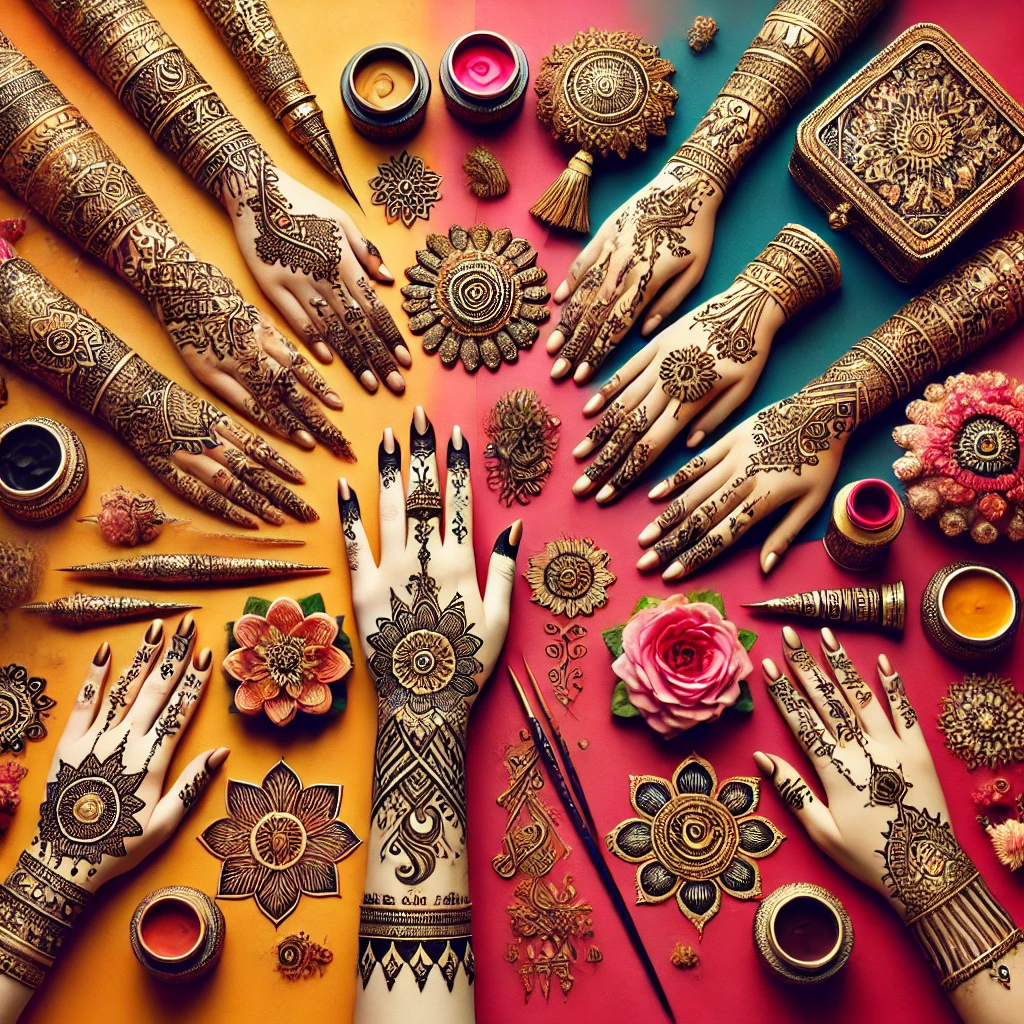
Mastering Mehendi Design: How to learn online?
Introduction to Mehendi Art
Mehendi art, also known as henna art, is a traditional practice that holds immense cultural significance in various regions across the globe. This intricate art form involves applying henna paste to the skin in elaborate designs, often during weddings, festivals, and other important life events. Historically, henna has been used for centuries, with its origins traceable to ancient civilizations in North Africa, the Middle East, and South Asia, where it was embraced not only for its decorative properties but also for its cooling and medicinal qualities.
Mehendi designs vary significantly across different cultures, each carrying unique symbols and meanings. In Indian tradition, for example, the intricate patterns often symbolize fertility, prosperity, and joy, which is why bride-to-be often adorns their hands and feet with elaborate mehendi before their wedding. Similarly, Arabic mehendi can include fluid, flowing designs characterized by larger coverage areas and broader patterns. The evolution of mehendi art has led to the emergence of various contemporary styles, blending traditional elements with modern aesthetics, making it appealing to a wider audience.
Today, there is a growing interest in learning mehendi design, drawing both enthusiasts and aspiring artists towards this beautiful art form. The advent of online learning platforms has further facilitated this trend by providing easy access to tutorials, courses, and community forums. With a plethora of resources available, individuals can learn at their own pace, perfecting their skills in the comfort of their own homes. This accessibility has made mehendi art not only a cherished cultural practice but also a trending avenue for creative expression and entrepreneurship.

Finding the Right Online Resources
In the digital age, aspiring mehendi designers have access to a wealth of online resources designed to enhance their skills and knowledge. Selecting the right platforms can significantly influence the learning process. Video tutorials are among the most popular resources, providing visual guidance that is especially beneficial for beginners. Websites like YouTube house numerous channels dedicated to mehendi design, where artists share step-by-step instructions covering everything from basic patterns to intricate designs.
Blogs also serve as valuable resources, offering in-depth articles, tips, and personal experiences from seasoned mehendi artists. When evaluating blogs, it is essential to consider the author’s expertise and the content’s relevance to your learning stage. Look for posts that feature clear images and comprehensive details that cater to various skill levels.
Social media platforms, particularly Instagram and Pinterest, are excellent for discovering unique mehendi designs in a visually engaging format. Follow accounts dedicated to mehendi and engage with their content to find inspiration and practical advice. Many artists share their techniques and promote workshops or classes, providing additional opportunities for learning.
Online courses often present a structured learning environment, which can be advantageous for those seeking a more formal education in mehendi design. Platforms like Udemy and Skillshare offer a range of courses tailored to different skill levels, most taught by experienced professionals. However, it is advisable to read reviews and assess the curriculum before enrolling to ensure the course meets your specific needs.
Additionally, distinguishing between free and paid resources is crucial. Free resources can be incredibly helpful, but they may lack comprehensive instruction or credibility. Paid tutorials often provide a deeper understanding of techniques along with consistent quality. By leveraging these various formats and critically assessing their credibility, learners can more effectively navigate their journey into the art of mehendi design.
Techniques and Tools for Beginners
Embarking on the journey of mehendi design requires a thorough understanding of the fundamental techniques and tools that are essential for beginners. One of the most critical tools is the mehendi cone, which can be crafted from various materials. The most common cones are made from plastic, paper, or fabric, each offering different benefits. Plastic cones are durable and provide a steady flow of henna, while paper cones offer more precision and control for intricate designs. Beginners should experiment with different cone materials to determine which best suits their style and comfort level.
Another essential aspect of mehendi design is the practice surface. While artistically inclined individuals may feel inclined to apply henna directly on the skin, it is advisable to practice on other surfaces first. Suitable options include paper, canvas, or even fruit peels, as these mimic the texture of human skin. Utilizing a practice surface will give learners the opportunity to hone their skills without the pressure of achieving a perfect design on themselves or others. Furthermore, maintaining a clean and organized workspace can enhance both focus and creativity, making the practice sessions more effective.
When starting out, beginners should concentrate on mastering basic skills, specifically line work and filling spaces. Line work forms the foundation of mehendi designs, requiring controlled and deliberate strokes. Simple exercises, such as drawing straight and curved lines or creating geometric patterns, can significantly improve hand coordination. Additionally, practicing filling spaces with intricate patterns, like floral motifs or traditional arabesque designs, helps in building confidence and proficiency. Tuning these skills gradually will not only elevate a beginner’s technique but also set the groundwork for more complex designs in the future.

Practicing and Sharing Your Designs
Regular practice is essential for mastering mehendi design, as it allows artists to refine their techniques and explore new patterns. Dedicate time each week to practice different styles, whether that means recreating traditional motifs or experimenting with contemporary designs. Consistency in practice not only hones your skills but also builds your confidence as a mehendi artist. To further enhance your learning experience, consider documenting your progress. This can include taking photos of your work, maintaining a sketchbook, or recording videos of your application process. Having a visual record of your designs will help you identify areas for improvement.
Sharing your mehendi designs online can be a rewarding endeavor. Social media platforms such as Instagram, Facebook, and Pinterest serve as wonderful avenues for showcasing your work to a broader audience. Use relevant hashtags to increase your visibility, and join conversations within mehendi communities. Engaging with fellow enthusiasts can lead to valuable feedback, constructive criticism, and support. Don’t hesitate to send your work to fellow artists or mentors for their insights; peer reviews can greatly accelerate your learning journey.
Participating in online mehendi groups is another excellent way to enhance your skills and meet like-minded individuals. Many communities host challenges, contests, or themed design events that encourage creativity and innovation. By taking part in these activities, you not only boost your own artistic growth but also contribute to a vibrant community of mehendi lovers. This interaction can lead to lasting relationships, collaborations, and mentorship opportunities within the world of mehendi. Embracing these practices ultimately enriches your artistic journey and fosters a sense of belonging in the expansive mehendi community.
